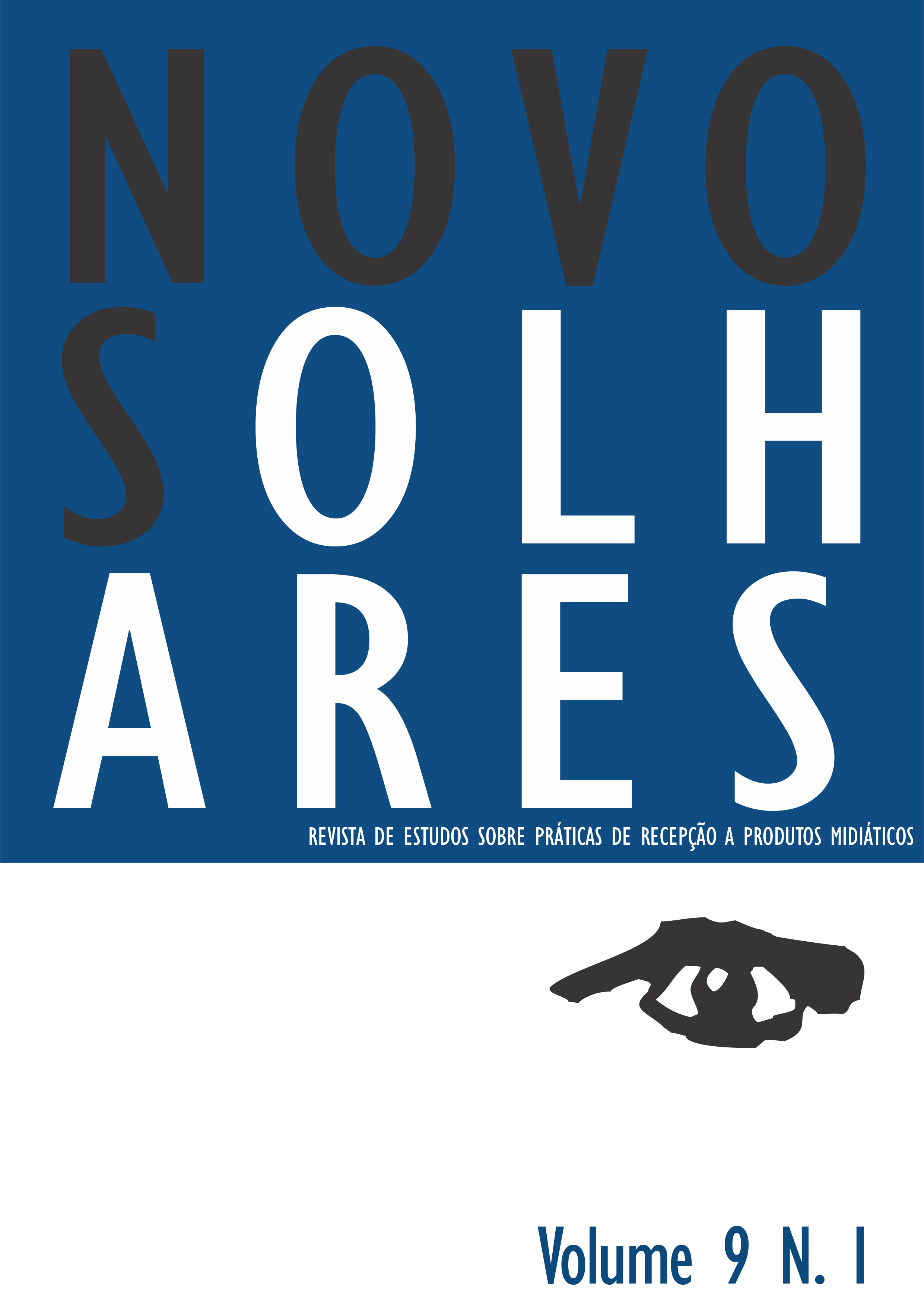Visualizing the experience of flight
photojournalistic portraits and refugee migration
DOI:
https://doi.org/10.11606/issn.2238-7714.no.2020.171997Palavras-chave:
Fotojornalismo, Retrato, Refugiados, Humanitarismo, SuéciaResumo
Este artigo explora como o fotojornalismo trata a migração de refugiados na Suécia, um país que atualmente recebe um grande afluxo de solicitantes de asilo, em particular durante um aumento na migração global em 2015. Teoricamente informado pela literatura demandando uma narrativa visual compassiva com foco na experiência de refugiados, o foco específico está nas inscrições no concurso de fotografia sueca do ano. Imagens de crianças foram particularmente proeminentes entre os participantes do concurso, enfatizando a migração forçada nos anos examinados, apresentando uma oportunidade para explorar ainda mais a representação visual, além de considerar o retrato como um gênero fotojornalístico e estratégia visual. Um desenho de leitura atenta sobre semiótica e análise composicional foi realizado em imagens e motivações do júri por escrito. Os resultados mostraram uma estética humanitária, formalidade como ferramenta de contar histórias e tensão não resolvida entre mostrar e proteger jovens vítimas de trauma.
Downloads
Referências
ANDEN-PAPADOPOULOS, K. The Picture of the Year and its view of the world. In: BECKER, K.; EKEKRANTZ, J.; OLSSON, T. (org), Picturing politics: Visual and textual formations of modernity in the Swedish press. Estocolmo: JMK, Stockholms University, 2000, pp. 196-211.
ARETS BILD. Arets Bild. Stockholm: Årets Bild Sverige, AB, 2016.
ARETS BILD. Arets Bild. Stockholm: Årets Bild Sverige, AB, 2017.
BARTHES, R. Mythologies. Londres: Vintage,2009.
BECKER, K. The changing picture of/on the newspaper page. In: BECKER, K.; EKEKRANTZ, J.; OLSSON, T. (org), Picturing politics: Visual and textual formations of modernity in the Swedish press. Estocolmo: JMK, Stockholms University, 2000, pp. 146-173.
BLEIKER, R. et al. The visual dehumanization of refugees. Australian Journal of Political Science, vol. 48, n. 4, pp. 398-416, 11/dez/2013. DOI: https://doi.org/10.1080/10361146.2013.840769
BOCK, M. A. Together in the scrum: Practicing news photography for television, print, and broadband. Visual Communication Quarterly, vol. 15, n. 3, pp. 169-179, 11/ago/2008. DOI: https://doi.org/10.1080/15551390802235511
CHOULIARAKI, L.; STOLIC, T. Rethinking media responsibility in the refugee ‘crisis’: A visual typology of European news. Media, Culture & Society, vol. 39, n. 8, pp. 1162-1177, 04/set/2017. DOI: https://doi.org/10.1177/0163443717726163
DENCIK, L.; ALLAN, S. In/visible conflicts: NGOs and the visual politics of humanitarian photography. Media, Culture & Society, vol. 39, n. 8, pp. 1178-1193, 18/ago/2017. DOI: https://doi.org/10.1177/0163443717726865
FEHRENBACH, H.; RODOGNO, D. Humanitarian photography. Cambridge: Cambridge University Press, 2015.
FEHRENBACH, H.; RODOGNO, D. A horrific photo of a drowned Syrian child: Humanitarian photography and NGO media strategies in historical perspective. International Perspective of the Red Cross, vol. 97, n. 900, pp. 1121-1155. 04/08/2016. DOI: https://doi.org/10.1017/S1816383116000369
GREENWOOD, K.; SMITH, Z. C. How the world looks to us: International news in award-winning photographs from the Pictures of the Year, 1943-2003. Journalism Practice vol. 1, n. 1, pp. 82-101, 07/fev/2007. DOI: https://doi.org/10.1080/17512780601078886
KEDRA, J.; SOMMIER, M. Children in the visual coverage of the European refugee crisis: A case study of the World Press Photo 2016. Journal of Applied Journalism & Media Studies, vol. 7, n. 1, pp. 37-58, 01/mar/2018. DOI: https://doi.org/10.1386/ajms.7.1.37_1
LANGTON, L. Photojournalism and today’s news. Creating visual reality. Oxford e Malden: Wiley-Blackwell, 2009.
LINFIELD, S. The cruel radiance: Photography and political violence. Chicago e Londres: The University of Chicago Press, 2010.
LUTZ, C. A.; COLLINS, J. L. Reading National Geographic. Chicago: The University of Chicago Press, 1993.
MOELLER, S. D. Shooting war: Photography and the American experience of combat. Nova York: Basic Books, 1989.
MORTENSEN, M.; ALLAN, S.; PETERS, C. The iconic image in a digital age: Editorial mediations over the Alan Kurdi photographs. Nordicom Review, vol. 38, n. S2, pp. 71-86, 28/nov/2017. DOI: https://doi.org/10.1515/nor-2017-0415
MORTENSEN, M.; TRENZ, H-J. Media morality and visual icons in the age of social media: Alan Kurdi and the emergence of an impromptu public of moral spectatorship. Javnost/The Public, vol. 23, n. 4, pp. 343-362, 24/nov/2016. DOI: https://doi.org/10.1080/13183222.2016.1247331
NAIR, P. The razor’s edge: Image and corpo-reality at Europe’s borders. In: SHEEHAN, T. (org), Photography and Migration. New York: Routledge, 2018, pp. 83-99.
PROITZ, L. Visual social media and affectivity: The impact of the image of Alan Kurdi and young people’s response to the refugee crisis in Oslo and Sheffield. Information, Communication & Society, vol. 21, n. 4, pp. 548-563, 2018. DOI: https://doi.org/10.1080/1369118X.2017.1290129
ROSE, G. Visual methodologies: An introduction to researching with visual materials. Londres: Sage, 2016, 4ª ed.
ROSENBLUM, N. A world history of photography. Nova York: Abbeville Press, 2008.
SONTAG, S. On photography. Nova York: Farrar, Straus and Giroux, 1977.
SONTAG, S. Regarding the pain of others. Nova York: Farrar, Straus and Giroux, 2003.
WOLTHERS, L. Seeing through Scandinavian exceptionalism: Tina Enghoff’s photography. Journal of European Studies vol. 47, n. 4, pp. 372-391, 2017. DOI: https://doi.org/10.1177/0047244117733896
YASCHUR, C. Shooting the shooter: How experience level affects photojournalistic coverage of a breaking news event. Visual Communication Quarterly, vol. 19, n. 3, pp. 160-176, 2012. DOI: https://doi.org/10.1080/15551393.2012.706575
ZARYCKA, M. (2016). Save the child: Photographed faces and affective transactions in NGO child sponsoring programs. European Journal of Women’s Studies, vol. 23, n. 1, pp. 28-42, 2016. DOI: https://doi.org/10.1177/1350506814568362
Downloads
Publicado
Edição
Seção
Licença
Proposta de Aviso de Direito Autoral Creative Commons
1. Proposta de Política para Periódicos de Acesso Livre
Autores que publicam nesta revista concordam com os seguintes termos:
- Autores mantém os direitos autorais e concedem à revista o direito de primeira publicação, com o trabalho simultaneamente licenciado sob a Licença Creative Commons Attribution CC Attribution-NonCommercial-NoDerivatives 4.0, que permite o compartilhamento do trabalho com reconhecimento da autoria e publicação inicial nesta revista.
- Autores têm autorização para assumir contratos adicionais separadamente, para distribuição não-exclusiva da versão do trabalho publicada nesta revista (ex.: publicar em repositório institucional ou como capítulo de livro), com reconhecimento de autoria e publicação inicial nesta revista.
- Autores têm permissão e são estimulados a publicar e distribuir seu trabalho online (ex.: em repositórios institucionais ou na sua página pessoal) a qualquer ponto antes ou durante o processo editorial, já que isso pode gerar alterações produtivas, bem como aumentar o impacto e a citação do trabalho publicado.



